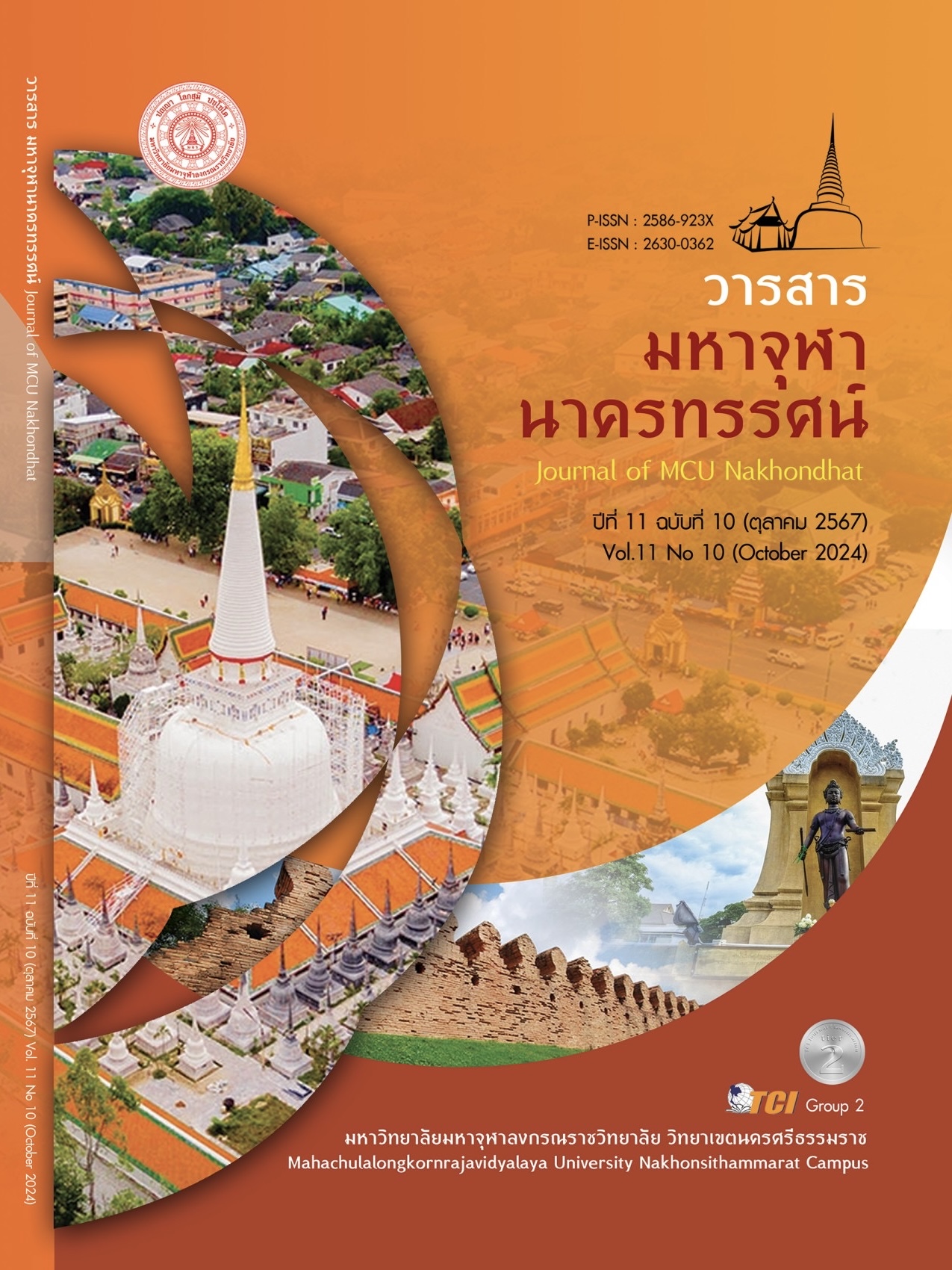PSYCHOLOGICAL CAPITAL, PERSON-ORGANIZATION FIT, PERSON-JOB FIT, AND JOB BURNOUT OF POLICE AFFILIATED WITH STATIONS OF METROPOLITAN POLICE DIVISION
Main Article Content
Abstract
The objectives of this research were to study the correlation between psychological capital, person-organization fit, person-job fit, and job burnout, and also to study the effect of psychological capital on job burnout, the effect of person-organization fit on job burnout, and the effect of person-job fit on job burnout among police officers affiliated with stations of Metropolitan Police Division. This study adopts a quantitative research methodology, with a sample size of 735 Metropolitan police officers. The research instrument used was a questionnaire, which was distributed at a rate of 10 questionnaires per station across 88 stations. Data were analyzed using PLS-SEM technique. The results of the overall estimated model fit assessment indicate a good fit with the data. The findings reveal that the correlation coefficients between psychological capital, person-organization fit, person-job fit, and job burnout are significantly negative. The hypothesis testing results partially support that psychological capital has a significantly negative direct effect on job burnout, and it is accepted that person-organization fit has significantly negative direct effects on job burnout, and also it is accepted that person-job fit has significantly negative direct effects on job burnout. Therefore, it is recommended that administrators should emphasize the importance of psychological capital, person-organization fit, person-job fit, and job burnout, and develop intervention strategies to mitigate job burnout in the workplace.
Article Details

This work is licensed under a Creative Commons Attribution-NonCommercial-NoDerivatives 4.0 International License.
References
ฐิติรัตน์ ตันไพศาล และรัตติกรณ์ จงวิศาล. (2566). ทุนทางจิตวิทยา ความยึดมั่นผูกพันในงาน และภาวะหมด ไฟในการทํางานของพนักงานระดับปฏิบัติการบริษัทสื่อสิ่งพิมพ์แห่งหนึ่งในกรุงเทพมหานคร. วารสารวิชาการศิลปะศาสตร์ประยุกต์, 16(2), 1-15.
เดลินิวส์ออนไลน์. (2566). เปิดสถิติย้อนหลัง 5 ปี ตร. ตบเท้าลาออก มากกว่าตัวเลขมีเหตุผลที่แท้จริงซ่อนอยู่. เรียกใช้เมื่อ 10 มกราคม 2567 จาก https://www.dailynews.co.th/news/2764078/
บล็อกตำรวจไทย. (2562). ลาออกเกือบพัน !! เพราะเหตุใด. เรียกใช้เมื่อ 10 มกราคม 2567 จาก https://thaicop.blogspot.com/2019/09/blog-post.html
สัณหวัช อุดมเจริญศิลป์. (2564). อิทธิพลเชิงสาเหตุของความสอดคล้องระหว่างบุคคลกับองค์กรที่มีต่อสุขภาวะเชิงอัตวิสัยและความเหนื่อยหน่ายในงานของครูศูนย์การศึกษาพิเศษ. ใน วิทยานิพนธ์ศิลปศาสตรมหาบัณฑิต สาขาวิชาจิตวิทยาประยุกต์. มหาวิทยาลัยศรีนครินทรวิโรฒ.
Avey, J. B. et al. (2011). Meta-analysis of the impact of positive psychological capital on employee attitudes, behaviors and performance. Human Resource Development Quarterly, 22(2), 127-152.
Babakus, E. et al. (2010). Service worker burnout and turnover intentions: Roles of person-fob fit, servant leadership, and customer orientation. Services Marketing Quarterly, 32(1), 17-31.
Bakker, A. B. et al. (2014). Burnout and work engagement: The JD–R approach. Annual Review of Organizational Psychology and Organizational Behavior, 1(1), 389-411.
Bitmiş M. G. & Ergeneli A. (2015). How psychological capital influences burnout: The mediating role of job insecurity. Procedia - Social and Behavioral Sciences, 207(2015), 363-368.
Cable, D. M. & DeRue, D. S. (2002). The convergent and discriminant validity of subjective fit perceptions. Journal of Applied Psychology, 87(5), 875-884.
Correia, I. et al. (2023). Protecting police officers against burnout: Overcoming a fragmented research field. Journal of police and criminal psychology, 38(2023), 622-638.
Demir, S. (2018). The relationship between psychological capital and stress, anxiety, burnout, job satisfaction, and job involvement. Eurasian Journal of Educational Research, 75(2018), 137-154.
Edwards, J. R. (1991). Person-job fit: A conceptual integration, literature review, and methodological critique. In C. L. Cooper & I. T. Robertson (Eds.), International review of industrial and organizational psychology. New York: Wiley.
Goodman, S. A. & Svyantek, D. J. (1999). Person-organization fit and contextual performance: Do shared values matter. Journal of Vocational Behavior, 55(2), 254-275.
Kilroy, S. et al. (2016). Perceptions of high involvement work practices, person-organization fit and burnout: A time lagged study of health care employees. Human Resource Management, 56(5), 821-835.
López-Núñez, M. I. et al. (2020). Psychological capital, workload, and burnout: What’s new? The impact of personal accomplishment to promote sustainable working conditions. Sustainability, 12(2020), 8124.
Luthans, F. et al. (2007). Psychological capital: Developing the human competitive edge. Oxford: Oxford University Press.
Maslach, C. et al. (1997). Maslach Burnout Inventory: Third edition. In C. P. Zalaquett & R. J. Wood (Eds.), Evaluating stress: A book of resources. Lanham: MD: Scarecrow Education.
O’Reilly, C. A. & Chatman, J. (1986). Organization commitment and psychological attachment: The effects of compliance, identification and internalization on prosocial behavior. Journal of Applied Psychology, 71(3), 492-499.
Rajper, Z. A. et al. (2019). Linking person job fit to employee job performance amid employees of services sector: The role of burnout as mediator. Journal of Social and Administrative Sciences, 6(4), 188-199.
Vancouver, J. B. et al. (1994). Multilevel analysis of organizational goal congruence. Journal of Applied Psychology, 79(5), 666-679.
Zang, L. & Chen, Y. (2022). Relationship between person-organization fit and teacher burnout in kindergarten: The mediating role of job satisfaction. Frontiers Psychiatry, 13(2022), 1-8.


